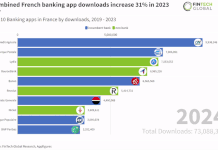Challenger banks have spent the better part of the last decade turning the banking world on its head, but is there a way for incumbents to bridge the technology divide?
It’s hardly a secret that neobanks have gone from strength to strength over the past ten years. Challenger banks repeatedly raise among the biggest investment rounds in the WealthTech sector.
In January, Latin American Nubank closed a $400m funding round that pushed its valuation past the $25bn mark, making it arguably the world’s most valuable challenger bank.
In the US, Chime recently achieved decacorn status after securing a valuation at $14.5bn on the back of a $485m Series F financing round.
In the UK, both Starling Bank and Revolut have reportedly broken even at the end of 2020. Revolut’s CEO and co-founder Nik Storonsky also became the nation’s first tech billionaire in November.
The reason behind the success of the sector is far from a secret. “Challenger banks have made serious waves in the industry over the past few years,” Nucoro, the WealthTech company, writes in a new blog.
“They have brought forward an offering that is genuinely disruptive, because of the way they are run. Digital challenger banks operate more like tech companies than banks, from their processes to their tech stacks, they have more in common with consumer-tech companies than traditional, branch-focused banks. They have been designed for scale, efficiency, agility and as a result enjoy a much lower cost of operating.”
Banks have been trying to catch up for years. They have invested billions to do so. However, the results have not always been as stellar as they hoped.
NatWest’s digital bank Bó is a telling example. The venture was poised as a Monzo killer after reports that the traditional lender had attempted to buy the challenger bank. The deal never materialised.
However, the history of Bó was filled with setbacks. When it was released, reviewers were left less than convinced about the business’ merits.
For example, James Cook, special correspondent at The Telegraph, was unequivocally unimpressed. “[Bó’s] clunky, confused branding and bare bones app feel like the first attempt of a fledgling startup rather than the cutting edge of the current financial technology boom,” he wrote.
Others accused Bó of having posted fake positive reviews about the app. The news that 30% of the accounts applications in the early days were fraudulent and its failed attempt to enlist the help of influencers to drum up support did nothing to change its reputation.
Then, in May 2020, just months after its November launch, NatWest-owner RBS pulled the plug on Bó.
Of course, not all incumbents’ attempts to digitalise their offering ends in such dramatic implosions.
However, a lot of them may end up wasting a lot of money.
Nucoro estimates that traditional lenders have invested roughly $1trn in the past three years to digitalise their infrastructures, but few of these banks are seeing any significant returns on their investments.
Only half the global banks in Accenture’s 2019 report are making significant advancements in digital transformation, as quoted by Nucoro.
“Banks will need to deploy technology to become leaner, more efficient, more integrated organisations, and digital banking platforms can help them do it more quickly, cost effectively and efficiently than traditional tech infrastructure,” Nucoro argues, suggesting that investing in a new digital investment platform would be the key investment they’d need to be successful.
The WealthTech argues that such a platform would help digitise the bank, boost business processes, automate operations and workflows for increased efficiency, improve customer experiences and and cut costs.
“Digital banking platforms also enable the integration of channels, linking them all through a central hub to provide a consistent customer experience,” says Nucoro. “Customer data can be unified, extracted from various product and business unit silos and pooled to create a true 360 degree view of the customer.
“Another major advantage offered by digital banking platforms is cost reduction. When banks shift from owning and updating their own systems to using cloud-native SaaS, the cost structure changes from Capex to Opex. There are no large upfront investments on infrastructure, pricing is flexible, costs are more predictable through fixed subscription, and there is additionally no risk of technology becoming obsolete and having to be replaced.
“The final ace in the pack is speed of deployment. Because digital banking platforms sit on top of and integrate with existing bank systems, they can be deployed in weeks or months rather than years and then facilitate almost instant deployment of new products, services and customer journeys.”
Copyright © 2021 FinTech Global










